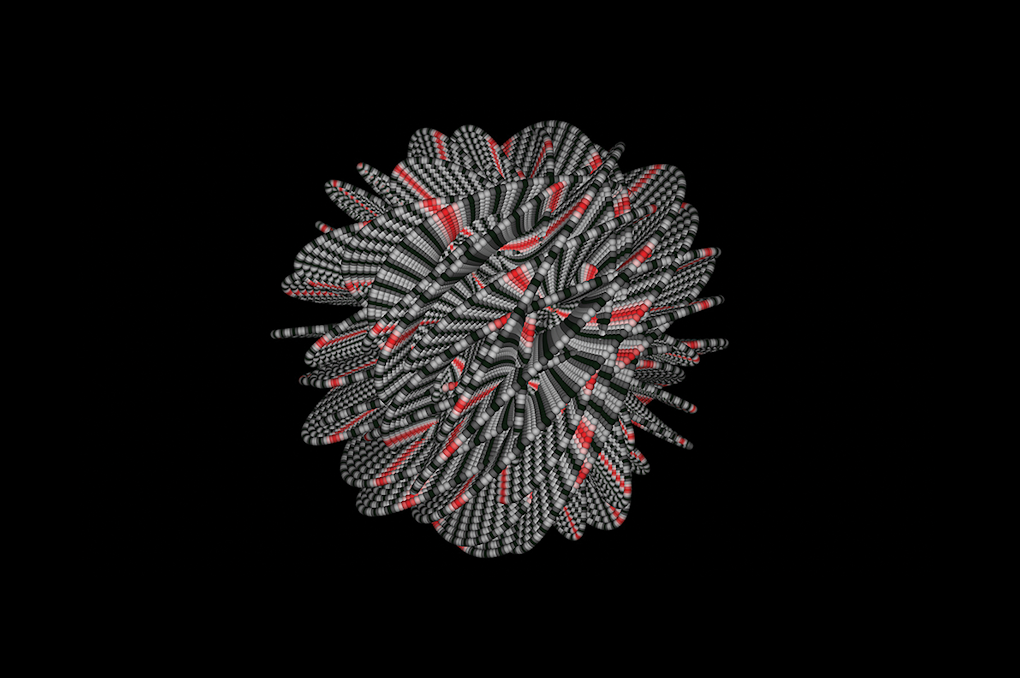
How Symmetry Guides Our Search for Truth
 Symmetry is seemingly baked into the human experience. It is in our bodies and in the art, architecture and music of every human culture. Symmetry is present not only in the world around us, but also in our science and mathematics. A theory is beautiful because it contains symmetries, and observations of those symmetries in turn guide the development of theories.
Symmetry is seemingly baked into the human experience. It is in our bodies and in the art, architecture and music of every human culture. Symmetry is present not only in the world around us, but also in our science and mathematics. A theory is beautiful because it contains symmetries, and observations of those symmetries in turn guide the development of theories.
As an aesthetic term, symmetry can mean a sense of balance or harmony, like the arrangement of characters in Raphael’s fresco The School of Athens; it can also refer to perfect or near-perfect reflection across an axis, like the bilateral symmetry of most humans and other vertebrates. The use of the term by mathematicians and physicists aligns more with the latter definition: Formally, a system has symmetry if it looks the same after a transformation. For example, a snowflake looks the same when rotated by a sixth of a turn or when flipped about a central axis. A circle is unchanged by rotation through any angle or reflection across any line that runs through the circle’s center.
Symmetry also exists in the context of groups. In mathematics, a group is a collection of objects along with a way to combine two of them to get a new object in the group. In the case of the snowflake, you can create another symmetry by combining a one-sixth-turn rotation and a reflection. Together, all the symmetries form the snowflake’s symmetry group. This group is finite, because there is only a finite number of operations that preserve the snowflake exactly.
A complete catalog of finite symmetries was one of the most important mathematical achievements of the last century. This catalog takes the form of a several-thousand-page proof (still being written up) that classifies the finite simple groups, the building blocks for all finite groups. Many finite groups do not represent the symmetries of any tangible three-dimensional shape but those of abstract, higher-dimensional objects.
The classification of finite simple groups covers objects like a square or a snowflake, whose symmetries are a discrete collection of rotations and reflections. But an object like a circle, which can be rotated by any angle, has an infinite symmetry group. These groups, which correspond to continuous families of transformations, are more immediately relevant to some of the most important connections made between symmetry and physics over the past century, including Einstein’s theories of relativity.

Mathematicians have also drawn inspiration from physics in finding new areas to explore. Nowhere is this relationship more evident than in the field of homological mirror symmetry. The subject, firmly a field of mathematics, grew out of string theory, one of the candidates for a unifying framework for physics. In string theory, particles are considered to be tiny, vibrating strings. Because of symmetries in the equations governing the theory, strings do not merely occupy the three dimensions of space; they also have an extra six dimensions coiled up into structures called Calabi-Yau manifolds. When mathematicians took a close look at these manifolds, they noticed a beautiful symmetry in these objects: Pairs of Calabi-Yau manifolds that seem completely different actually encode the same physics. These mirror pairs opened up an entirely new avenue of mathematical research, which is now flourishing as researchers discover similar ‘mirror pair’ connections in other classes of manifolds.
Although symmetry has guided researchers to new theories and relationships, physics may someday outgrow it. One of the driving forces in modern physics is the quest to develop a theory that unites quantum mechanics with general relativity — a ‘theory of everything.’ The sticking point is gravity. Quantum field theory and quantum mechanics have provided frameworks within which to understand the other forces in nature, but so far there is no accepted way to describe gravity in the language of quantum mechanics. In string theory, the discovery two decades ago of the anti-de Sitter/conformal field theory (AdS/CFT) correspondence — like mirror symmetry, a deep relationship between two outwardly dissimilar formulations of physical laws — has provided a promising path forward.
But there is a cost: symmetry. Researchers have long conjectured that a coherent theory of quantum gravity would require breaking one of the two types of symmetry — namely, global symmetry (the other is called gauge symmetry). Recent work by the physicists Hirosi Ooguri of the California Institute of Technology and Daniel Harlow of the Massachusetts Institute of Technology has shown that if this theory comes from the AdS/CFT correspondence, global symmetry will indeed be sacrificed: No formulation of quantum gravity that is consistent with string theory and the AdS/CFT correspondence can have global symmetries in the mathematical framework describing it.
Does this fascinating result mean we must leave symmetry behind to make future scientific advances? Not necessarily. Ooguri and Harlow say that the requirement of global symmetry must be abandoned, but many local symmetries remain. Perhaps an implication of their work is that our notion of symmetry instead may need modification and more precision, if it is to continue guiding researchers to new discoveries.
